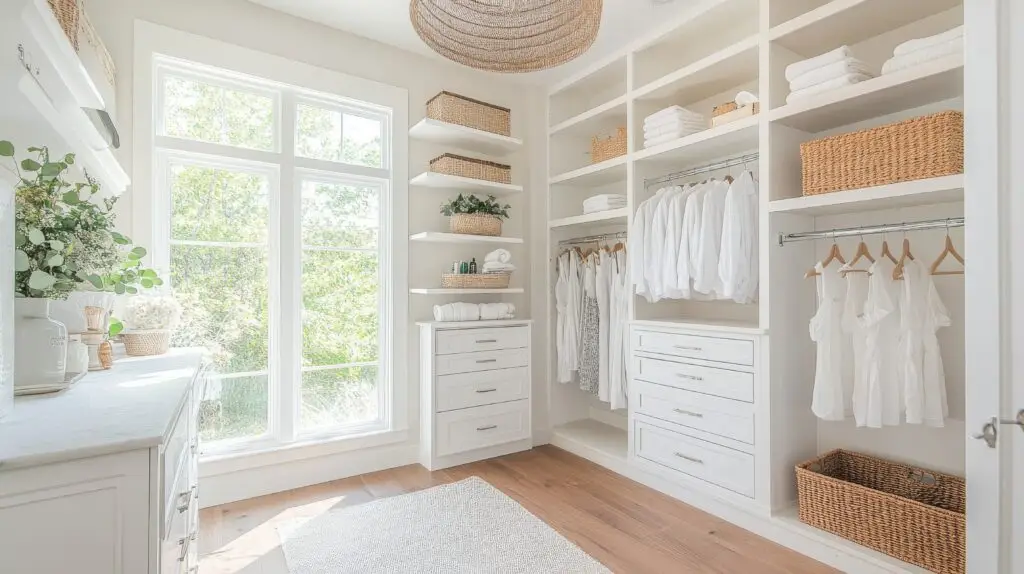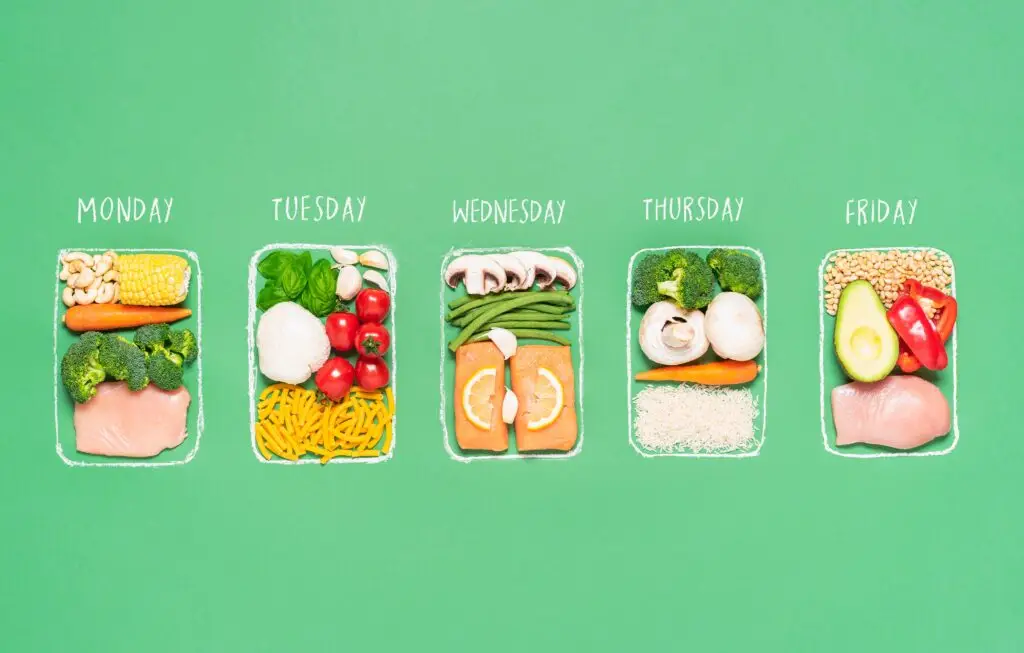The Secret to Saying No: How to Reclaim Your Time at Home Without Feeling Guilty

Say No Without the Spiral: Scripts, Mindset Shifts, and Confidence Boosters Inside Have you ever wondered why two simple letters—”N” and “O”—are so challenging to put together when it matters most? Whether it’s volunteering for the school fundraiser, hosting family dinners, or taking on extra chores, many of us find ourselves overcommitting at home. The pressure to be agreeable often leaves us overextended, stressed, and resentful. Yet, the ability to say “no” confidently is crucial to regaining control over our lives and creating space for what genuinely matters. In this article, we’ll uncover why saying no at home is tough, explore real-life insights from women who’ve mastered the art of gracious refusals, and provide actionable strategies you can use to set healthy boundaries without guilt. Why Saying No Feels So Difficult From early childhood, saying yes is rewarded. Whether it was parents praising obedience, teachers recognizing compliance, or friends appreciating our willingness, each “yes” reinforced a powerful positive feedback loop. Over time, this conditioning makes “no” seem uncomfortable, even unnatural. Furthermore, cultural expectations and a deep-seated desire to be liked amplify this difficulty. For many women especially, the thought of disappointing family or friends triggers guilt and fear of judgment, turning what should be a simple decision into an internal struggle. Real-Life Insights: Learning from Others Irina, a mother and busy professional, eloquently captures this dilemma: “Only after we’ve suffered the consequences of too many yeses does the word ‘no’ lose its edge and become complete again.” Like Irina, countless women navigate complex internal narratives when faced with home commitments. Kathy, another mother juggling multiple roles, found herself regularly overwhelmed by volunteer duties and family demands until she made a transformative decision. “I used to have a big ‘yes’ sign on my forehead. But I realized overextending myself made me impatient with my kids. Learning to say no changed everything for us.” These experiences reveal a crucial truth: consistently prioritizing others’ needs over your own is not sustainable. Learning to assert your boundaries is not selfish—it’s essential. Strategies to Say No Without Guilt If you find it difficult to decline requests gracefully, the following strategies can help ease the process and reduce your feelings of guilt. Once you’ve understood these strategies, it’s helpful to have some go-to phrases at your fingertips for everyday scenarios. Below, you’ll find practical examples you can adapt easily to your personal circumstances: Pause Before Responding: If “no” feels too abrupt, use “Let me think about it and get back to you.” This pause gives you space to assess your commitments realistically. Create Personal Policies: Nina, founder of momAgenda, established a clear personal rule: one significant volunteer commitment per year. She explains, “Once I’ve chosen that one big thing, it’s easy to decline everything else gracefully.” Defining clear guidelines simplifies decision-making. Understand Your Motivations: Ask yourself why you feel compelled to say yes. Is it fear of disappointing others, cultural expectations, or craving validation? Understanding these drivers can help you detach from unnecessary guilt. Practice Assertive Communication: A polite but firm “I’m sorry, but I can’t take that on right now” is often enough. Practice these phrases regularly—they become more comfortable each time. Embrace Imperfection: Recognize that your worth isn’t tied to constant productivity or pleasing everyone. Remind yourself regularly that it’s okay not to do everything perfectly. When you’re ready to practice saying no, here’s a curated list of multi-purpose, practical, and kind phrases to help: “My heart says yes, but my calendar says no.” “Let me check my schedule and get back to you.” “I’d love to, but I’m already committed elsewhere.” “That’s a wonderful idea, but I simply can’t fit it in right now.” “Thanks so much for thinking of me, but I have to decline.” “I wish I could help, but my plate is full at the moment.” “This deserves more time than I can give it right now.” “I’d love to help next time; please ask me again.” “I appreciate you asking, but I need to pass this time.” “Unfortunately, I need to sit this one out, but keep me in mind for the future.” Reclaiming Your Time and Energy Learning to say no transforms your daily life. It frees up precious time and energy, allowing you to be more present and fulfilled at home. Your relationships improve when built on honesty and clear boundaries. Start today by implementing these strategies. Embrace the initial discomfort as a sign you’re growing in strength and confidence. Remember, saying no is not just about refusing others—it’s about affirming your own worth, priorities, and well-being. In reclaiming your “no,” you reclaim your time, peace, and happiness, making your home not just organized but truly joyful.
Love, Mess, and Harmony: Organizing Together

Small Shifts That Turn Clutter Conflicts into Cooperative Wins If you’ve ever shared your living space with someone whose organizational habits differ dramatically from yours, you know how challenging—and frustrating—it can be. You’re not alone if you’ve found yourself standing amidst piles of laundry, scattered papers, and misplaced keys, silently (or loudly!) wondering how your otherwise charming significant other can be such a slob. But before frustration reaches a fever pitch, let’s take a deep breath and tackle this issue with practical strategies designed to help you get organized and keep harmony in the home. Understanding the Messy Reality Opposites attract, and nowhere is that clearer than in domestic arrangements. Often, neatniks pair with messier counterparts, leading to inevitable tension around tidiness. But being in love with someone whose tolerance for clutter far surpasses your own doesn’t have to mean perpetual irritation. It’s about creating a middle ground where both can coexist peacefully and get organized without resentment or nagging. The Power of Positive Reinforcement First things first—ditch the nagging. Yes, really! Nagging is counterproductive and typically only breeds resentment and defensiveness. It’s tempting to try and correct untidiness with constant reminders, sighs, or passive-aggressive comments. But here’s the truth: negativity won’t inspire anyone to embrace tidiness. Instead, flip your approach. Highlight the positive aspects of getting organized—such as less stress when leaving the house, fewer lost items, and a more relaxing, visually appealing living space. When your partner makes even the smallest step toward tidiness, praise them genuinely. “Wow, it’s so much easier to find everything when the counters are clear!” works much better than an irritated sigh about the clutter. Establish “Tornado Clean-Up” Sessions Messiness often escalates gradually until it feels overwhelming. To combat this, designate a regular “de-tornado” time each week—a short, focused session dedicated to tidying up. This practice acknowledges your partner’s natural ebb and flow between order and chaos but creates clear, manageable boundaries. Make this session pleasant. Put on music you both enjoy, share funny conversations, or follow it with a small reward, like watching a favorite show together. Over time, this routine can become a positive habit instead of a chore, subtly transforming tidiness from an obligation into something approaching enjoyment. Meet Each Other Halfway: Quid Pro Quo Relationships thrive on compromise. If you’re asking your partner to make strides in their organizational habits, consider reciprocating by working on a habit they’d like you to address. This strategy, known as “quid pro quo” (Latin for “this for that”), helps create mutual empathy and understanding. Talk openly and warmly about what each of you can do better. Perhaps you’ll stop leaving dishes in the sink overnight if your partner commits to keeping laundry off the bedroom floor. Both parties feel acknowledged, and making an effort becomes less about “winning” a domestic battle and more about building a mutually respectful and cooperative home. Clarify Expectations (Gently!) Sometimes, differing standards of tidiness come down to a lack of clarity about what “organized” truly means to each partner. If you haven’t yet discussed expectations, do so gently. Avoid accusations and instead frame the conversation around mutual benefits. “I’ve noticed mornings feel smoother when everything has its place. What if we both tried setting a designated spot for keys, bags, and other daily essentials?” Approaching the conversation this way helps your significant other see organization as something helpful rather than purely corrective. Overcoming the “Never Motivated Together” Problem If you and your significant other rarely feel motivated to tackle clutter simultaneously, consider these practical strategies: Set a Regular Maintenance Moment: Agree on a specific recurring time slot—like Sunday evenings or Thursday nights—for dealing with clutter. A routine helps mentally prepare both of you, reducing resistance when it’s time to tidy. Use Short, Timed Sessions: Commit to brief, focused tidying sessions (just 10–15 minutes). Short bursts of effort feel manageable, minimizing procrastination. Divide and Conquer: Split tasks based on individual preferences or strengths. You don’t always need to organize together; sharing responsibilities in this way can reduce friction. Gentle, Fun Reminders: Keep the atmosphere light with playful texts, humorous notes, or visual cues rather than nagging. Visual Incentives: Create appealing and convenient storage solutions—like attractive baskets or hooks—to subtly encourage tidiness. When Your Partner Feels Defensive Messy partners can sometimes become defensive because they perceive criticism of their tidiness as personal. To overcome defensiveness: Focus on Behavior, Not Character: Use language that separates actions from personality. Say, “I feel stressed by clutter in the entryway,” instead of “You always make a mess!” Reassure Them: Remind your partner that your desire for tidiness isn’t a critique of their character. Reinforce that your goal is a shared comfortable living space, not perfection. Empathize and Validate: Acknowledge the legitimacy of their perspective, expressing understanding that organizing may feel overwhelming or tedious for them. Celebrate Small Victories Change doesn’t happen overnight. It’s crucial to celebrate small victories along the path to organization. Did your partner finally remember to hang their coat in the closet instead of leaving it on the couch? Celebrate it! Acknowledge their effort positively and enthusiastically. By consistently recognizing improvements—even minor ones—you reinforce that tidiness leads to happiness, ease, and positive energy. Over time, this builds genuine motivation. Embrace Imperfection Finally, accept that perfection isn’t attainable—or even desirable. A perfectly organized home doesn’t necessarily equate to happiness. Make space for a little disorder, understanding that your partner’s natural messiness is part of the whole wonderful package that makes them unique. Organizational mismatches needn’t escalate into a chronic household crisis. By maintaining a positive, supportive approach, setting reasonable expectations, and celebrating improvements, you can turn potential frustrations into opportunities to deepen understanding and connection. Remember, the goal is harmony—not perfection. When both partners feel valued and respected, finding common ground becomes easier—and messiness just another charming quirk you both can live with happily.
Are You Addicted to “Org Porn?”

Imperfection is the Key to Getting Organized Ever found yourself scrolling endlessly through perfectly organized pantries or immaculate closets on social media, only to end up feeling stressed and overwhelmed about your own space? You’re not alone. This phenomenon—known as “org porn”—can often make you feel overwhelmed, fueling mental clutter and negative thoughts about your own ability to get organized. What Exactly Is Org Porn? Org porn is the curated, flawless portrayal of organized spaces and daily tasks you see everywhere, especially on social media. While these images can initially boost your motivation and inspire you, too much exposure can increase your mental load, creating unrealistic expectations for yourself, your home, and even your family members. The Hidden Costs of Org Porn As much as those picture-perfect closets and spotless kitchens might promise relief from your cluttered reality, they frequently deliver the opposite: Increased stress and anxiety: Always comparing your home to perfect online images can add to your mental clutter. This can make you feel like you are never good enough. Overspending: Trying to copy these perfectly arranged spaces can make you buy costly organization products you don’t really need. Strained relationships: Unrealistic standards can lead to frustration when family members or friends don’t live up to the idealized expectations you’ve created from scrolling through social media. Feeling Stuck? It’s Time to Get Unstuck One of the most common side-effects of org porn is organizational inertia—when you feel overwhelmed and don’t know how to start. If perfection is your standard, it’s easy to become paralyzed, making it almost impossible to stop procrastinating. Instead of getting caught in this paralysis, break tasks into smaller steps. Taking manageable actions helps you reduce stress and get unstuck, building momentum to get organized sustainably. Take Rosemary, a finance director and busy mom, who emphasizes it’s crucial not to “major in the minors.” Prioritize your tasks by focusing only on what truly matters in the present moment and let go of less critical details. This approach significantly decreases the mental load and helps you tackle the most important things effectively. Flip the Script: Mindful Organization Over Perfection If you’re ready to break free from org porn addiction and reduce your mental load, shift your perspective. Instead of chasing airbrushed perfection, practice mindfulness by focusing on the present moment and your true goals: Reduce stress: Incorporate deep breathing and mindfulness exercises before tackling organizational projects. Mindfulness can help ground you, making it easier to handle mental clutter and reduce anxiety associated with getting organized. Define your why: Clarify your motivations—whether it’s reducing daily anxiety, spending quality time with friends and family, or freeing up mental space. By clearly defining your purpose, you can more easily determine your own realistic standards for success. Seek realistic inspiration: Use achievable ideas rather than unrealistic images from social media to maintain practical motivation. Understand that these images are often staged and impractical in real-life scenarios. Embrace Imperfect Organization At Buttoned Up, we strongly advocate for the concept of imperfect organization—a practical approach that emphasizes functionality over perfection. Life is unpredictable and messy, and organizational perfection is neither sustainable nor desirable. Letting go of unrealistic standards can dramatically reduce feelings of inadequacy and frustration. Embracing imperfection doesn’t mean giving up on organization; rather, it means redefining what organized means to you personally. Maybe your home doesn’t look like a Pinterest board, but if you have systems that help you effectively manage daily tasks, reduce stress, and eliminate mental clutter, then you’re successfully organized. Delegate and Share the Load Another powerful strategy to lighten your mental load and reduce stress is learning to delegate effectively. Often, individuals—particularly women—take on too much, feeling solely responsible for keeping everything in order. Learning to share tasks with family, friends, or professionals can help reduce feelings of being overwhelmed. This lets you focus on what matters most. Clear communication about expectations and outcomes, coupled with the willingness to let others complete tasks in their own way, can create more breathing room in your life and ease your journey toward a healthier, more balanced form of organization. Bottom Line True organization isn’t about perfection; it’s about creating spaces and routines that genuinely make you feel good, help you stop procrastinating, and function well in your real, messy, beautiful life. Next time you catch yourself spiraling after an org porn binge, pause, breathe deeply, and remember: small steps forward are always better—and healthier—than chasing impossible perfection. Ever found yourself scrolling endlessly through perfectly organized pantries or immaculate closets on social media, only to end up feeling stressed and overwhelmed about your own space? You’re not alone. This phenomenon—known as “org porn”—can often make you feel overwhelmed, fueling mental clutter and negative thoughts about your own ability to get organized. What Exactly Is Org Porn? Org porn is the curated, flawless portrayal of organized spaces and daily tasks you see everywhere, especially on social media. While these images can initially boost your motivation tips and inspire you, too much exposure can increase your mental load, creating unrealistic expectations for yourself, your home, and even your family members. The Hidden Costs of Org Porn As much as those picture-perfect closets and spotless kitchens might promise relief from your cluttered reality, they frequently deliver the opposite: Increased stress and anxiety: Constantly comparing your home to curated online images can intensify mental clutter, making you feel like you’re never good enough. Overspending: Trying to copy these perfectly arranged spaces can make you buy costly organization products you don’t really need. Strained relationships: Unrealistic standards can lead to frustration when family members or friends don’t live up to the idealized expectations you’ve created from scrolling through social media. Feeling Overwhelmed? Here’s How to Get Unstuck. One of the most common side-effects of org porn is organizational inertia—when you feel overwhelmed and don’t know how to start. If perfection is your standard, it’s easy to stop procrastinating impossible. Instead of getting caught in this paralysis, it’s important to break tasks into smaller
Kickstart Your Organized Life Today!

Small Steps. Big Shifts. A Saner, More Organized Life Starts Now Ever found yourself scrambling to find your keys—again—or digging through a pile of mail to locate an overdue bill? You’re not alone. Clutter and disorganization have a sneaky way of sabotaging our productivity, elevating stress, and draining mental energy. If you’ve ever wondered how I can organize my life when things feel too chaotic, without feeling overwhelmed or losing momentum, you’re in the right place. The good news? You don’t need to be naturally meticulous or invest in a fleet of matching storage bins. What you do need are practical strategies grounded in psychology and behavior science—and a willingness to take small but consistent steps. In this guide, we’ll explore realistic, evidence-based steps to organize your life. Whether you’re trying to organize everything all at once or wondering how to organize your life in one week, you’ll find doable, motivating strategies here. , evidence-based organizing tips and strategies to help you reclaim your time, reduce friction in your daily routine, and cultivate the clarity you need to thrive—not just for a day or two, but for the long term. The Time We Lose to Disorganization Most of us underestimate the cumulative impact of disorganization. The average person spends close to an hour a day looking for misplaced items. Over the course of a year, that’s over 180 hours—the equivalent of two full workweeks. Now consider this: what would your week look like with an extra hour a day? That’s time you could invest in your studies, career development, hobbies, wellness, or simply decompressing. Disorganization doesn’t just cause minor annoyances—it undermines your ability to function at your best: It delays your decision-making It introduces cognitive friction It disrupts your routines It exacerbates anxiety and stress A Closer Look at the Costs The costs of clutter are multifaceted: Emotionally, it generates a low-grade background stress that’s difficult to turn off Financially, it leads to late fees, missed deadlines, and unnecessary repurchases that derail your financial goals Cognitively, it consumes bandwidth that could be better spent on meaningful pursuits It also compromises creativity, impedes learning, and, in some cases, contributes to feelings of shame or helplessness. For students or young professionals, these effects compound under pressure. No wonder so many of us find ourselves stuck in a loop, struggling with overcoming procrastination and overwhelm whenever we consider getting our lives organized. Why Getting Organized is a High-Leverage Move Before we get into the personal benefits, it’s worth taking a look at what the research says. Study after study confirms that clutter doesn’t just crowd your home or workspace—it clouds your brain. A UCLA study of dual-income families found a direct link between high cortisol levels (a stress hormone) and the density of household objects. In short: more stuff equals more stress, especially for women. Research published in the Personality and Social Psychology Bulletin found that individuals who described their homes as “cluttered” or “unfinished” experienced more depressed moods throughout the day than those who described their homes as “restful” and “restorative.” Meanwhile, researchers at Princeton University Neuroscience Institute discovered that physical clutter in your environment competes for your attention, resulting in decreased performance and increased stress. The conclusion? Your brain functions better in an organized space. Productivity experts agree. According to a 2022 report from the National Association of Productivity & Organizing Professionals (NAPO), people who develop simple organizing systems increase their efficiency by up to 30%. That’s not a nice-to-have—that’s a game-changer. These insights reinforce what you probably already feel in your gut: when your environment is clean and streamlined, it’s easier to think, create, and connect. So what’s the upside? Why is getting started with organizing—a concept that lies at the heart of building sustainable change worth your time? 1. You Gain Back Control Over Your Time Even reclaiming 30 minutes a day results in over 180 hours a year—time that can be redirected toward academic progress, professional goals, meal planning, or meaningful self-care. 2. Your Mental Load Lightens Clutter creates decision fatigue. When your physical space is in disarray, your mind mirrors that chaos. Organizing your environment leads to: Improved executive function Sharper focus Greater sense of autonomy and competence Tangible benefits to mental health 3. Your Relationships Improve When your environment is more intentional, communication becomes smoother, tensions decrease, and you show up with greater presence and bandwidth for the people in your life. 4. You Create a Growth-Oriented Environment Discipline doesn’t thrive in chaos. When your physical environment is organized, your internal environment is primed for growth—whether that’s learning a new skill, setting a personal goal, or launching a creative project. You’ll not only be able to stay on top of your tasks, but also develop the kind of habits that support your long-term goals. The Psychology of Organization: Why It Feels So Hard to Start Getting organized isn’t as simple as making a to-do list. It often involves: Letting go of sentimental attachments Facing avoided decisions Acknowledging bad habits that no longer serve you Which is why organizing isn’t just a physical act—it’s a psychological one. That stack of unread mail? It might represent financial decisions you’ve been avoiding. That overflowing closet? A lingering attachment to a former version of yourself. If getting started with organizing feels like a mental block, you’re not imagining it. There’s also the paradox of perfection: waiting until you can do it “right” often results in doing nothing at all. Fortunately, there are strategies for overcoming procrastination and overwhelm that make the process approachable and even rewarding. Common Emotional Barriers to Getting Organized 1. Fear of Letting Go Sometimes the hardest part isn’t figuring out where to start—it’s parting with things that have meaning. You might keep something “just in case” or because it holds a memory. But it’s worth asking: is this item serving your present life or anchoring you to the past? 2. Perfectionism If you’ve ever delayed organizing because you couldn’t do it perfectly, you’re not
How to Automate Household Management Chores (Without Losing the Plot)

Simple steps to make family logistics smoother, more collaborative, and way less stressful Family life runs on a thousand tiny logistics—appointments, snacks, school spirit days, carpool rotations, birthday gifts, laundry cycles, meal planning, sports schedules, and more. And if you’re the person quietly holding the entire operation in your head? It’s only a matter of time before things break (or you do). At Buttoned Up, we believe delegation and automation are secret weapons for getting more organized and less overwhelmed. When you set up simple systems to carry the burden of remembering, coordinating, and prompting, you reclaim time, energy, and sanity. Here’s how to automate your family planning—without becoming a robot. Step 1: Externalize the Mental Load The first move in automation? Stop carrying it all in your brain. You need a system where your plans, commitments, and recurring tasks live outside your head—and ideally, where others can see them too. Try this: Use a shared calendar (Google Calendar, Cozi, or TimeTree work well). Add recurring events for things like: Trash day School spirit days Parent/teacher conference weeks Weekly dinner planning Medication refills Grocery ordering Bonus: use emojis in calendar event titles to make things easily scannable by kids and partners. Step 2: Set a Weekly “Command Center” Routine The key to staying ahead is a 15-minute family planning power session once a week. It can happen solo or with a partner—Sunday evening, Monday morning, or whenever your brain is least mushy. Use a checklist or recurring prompt like: What’s coming up this week? Any schedule changes? Do we need groceries, gifts, or appointments? What’s for dinner 3 nights this week? Apps like Notion, Google Docs, or even a paper planner can serve as your weekly dashboard. ChatGPT can help generate a quick plan using this prompt: “Help me plan meals and logistics for a family of 4 this week. We have soccer on Tuesday and Thursday, and no time for big cooking Thursday.” Step 3: Automate the Inputs There’s so much you don’t need to remember anymore. Here are easy wins: Use AI + Reminders: “Remind me to check the school calendar on the 1st of every month.” “Text me at 6pm on Thursdays to order groceries.” “Ask me every Sunday: who’s cooking dinner three nights this week?” Set Email Filters or Forwarding Rules: School or sports emails → auto-label “ACTION NEEDED” or forward to a shared inbox. Create Smart Forms for Shared Tasks: Google Forms for extended family help (e.g., “Sign up to bring a dish to Grandma’s birthday”). Airtable or Trello to track birthday gifts, doctor appointments, etc. Step 4: Share the Dashboard (and the Decisions) Automation doesn’t work if you’re still the only one logging in. Pick one or two shared tools and make them the source of truth. Then assign weekly check-ins with your co-pilot (partner, tween, or older teen). Encourage them to: Add their own events Check the calendar before asking “what’s for dinner?” Own one area (e.g. “you’re in charge of pet care reminders”) Don’t just ask for help. Hand over the reins. Step 5: Test, Tweak, Repeat No system is perfect. But any system is better than carrying it all on your own. Start small—just one calendar, one reminder, one shared habit—and build from there. Your future self will thank you.
Get Organized: Home Command Center to End Clutter & Chaos

Because a Little Structure Can Create a Lot of Peace Imagine your home as a living, breathing entity with its own heartbeat. Just like the human heart, your home functions silently behind the scenes, maintaining the daily flow of life without much fuss—until something gets clogged. This “clogging” is more than just a messy inconvenience; it affects every aspect of your well-being. If you’ve ever returned from vacation to mountains of mail, hundreds of unread emails, and overflowing laundry baskets, you know exactly what a clogged home feels like. But it doesn’t have to be this way. Just as a healthy heart pumps blood efficiently through clear arteries, your home can become a smoothly running system. At Buttoned Up, we call this creating a “Control Center”—a central hub within your home that efficiently manages your life’s details like appointments, schedules, notes, and important messages. In short, it’s your key to getting organized. The Four Arteries of Home Organization Every household has four crucial arteries that, if kept clear, allow for smooth daily operations and peace of mind. Artery 1: The Inbox This artery is your family’s communication center, handling everything from emails and voicemail to snail mail and text messages. Given today’s abundance of communication channels, it’s easy for this artery to get overloaded. Simplifying and creating a dedicated inbox space is vital to effective life organization. Set up one area—maybe a basket or tray—where all incoming mail and papers immediately go. Schedule a regular weekly time to clear it out, reducing the clutter and stress that builds with an overloaded inbox. Artery 2: The Schedule Your family’s schedule is the lifeline that manages everyone’s time. With demands like appointments, extracurricular activities, and social events, it’s a delicate balance. To keep this artery clear, establish one centralized calendar accessible by everyone—whether digital or on a physical board in a high-traffic area. Regular updates ensure everyone stays informed, preventing overlaps and confusion. Effective scheduling is fundamental to both home organization and life organization, reducing anxiety and restoring predictability. Artery 3: The Chores Home chores are essential for basic cleanliness and functionality. This artery includes everything from doing laundry and dishes to yard care. When chores pile up or become unevenly distributed, the home’s flow is disrupted. To unclog this artery, clearly assign responsibilities. A chore chart or digital app can help family members visualize and stay accountable. Rotate tasks periodically to prevent burnout and resentment, keeping your home healthy, harmonious, and organized. Artery 4: The Stuff Physical possessions—clothes, toys, books—are the final artery. Clutter accumulates quickly, especially in consumer-driven societies where acquiring new items feels effortless. Regular decluttering prevents your home from feeling overwhelmed. Consider adopting the “one in, one out” rule: every time a new item enters the home, another is donated or discarded. Regularly scheduled “clear-out days” can keep your spaces airy and contribute significantly to life organization. Diagnosing and Clearing Your Clogs To truly benefit from a Control Center, start by identifying your home’s specific pain points. Everyone’s organizational style differs, and your ideal system should reflect your unique needs and lifestyle. Take a moment to honestly assess which arteries in your home are clogged. Maybe it’s an overflowing inbox or a chaotic schedule. Perhaps it’s piles of neglected chores or mountains of unused stuff. Pinpointing these issues allows for targeted interventions that yield noticeable results quickly. Creating Your Home’s Control Center Once you’ve identified your home’s trouble spots, it’s time to get organized by setting up your personalized Control Center. Choose an area in your home that’s accessible and frequently passed—like your kitchen, entryway, or home office. Here’s a quick guide to setting up your Control Center effectively: Inbox Zone: Create a dedicated area for incoming communication. Ensure it’s large enough to accommodate the expected volume but not so large that it becomes a dumping ground. Scheduling Zone: Position a clear calendar or a digital screen displaying everyone’s schedules. Update it regularly and encourage family members to consult it daily. Chore Zone: Display a visible chore chart nearby. Make responsibilities clear and rotate them regularly to keep everyone engaged. Stuff Management Zone: Set up boxes labeled for donation, recycling, and trash in convenient locations. Encourage regular purging and celebrate progress with rewards. Reinforcing Your Organizational Habits Change takes time and persistence. As you introduce these organizational habits, openly discuss the importance and benefits with your family. Celebrate small victories, like maintaining a clear inbox for a week or keeping the schedule conflict-free. Provide positive feedback to family members when they contribute to keeping arteries clear. This could be as simple as acknowledging when chores are done promptly or appreciating the neatness of communal spaces. The Big Payoff When your home’s arteries flow smoothly, the benefits are profound. Stress levels decrease, family interactions improve, and your home becomes a genuinely peaceful sanctuary. Rather than returning to chaos after a day of work or school, you and your family can enjoy relaxing, quality time together. In fact, Buttoned Up’s research shows many people find home organization tasks like decluttering to be incredibly satisfying—even therapeutic! Nearly half the women surveyed found decluttering more gratifying than some of life’s greatest pleasures. Ultimately, a healthy, well-managed home is not about perfection. It’s about making life easier and more fulfilling, about reclaiming your time to focus on what truly matters—enjoying moments with your loved ones, pursuing passions, or simply relaxing. It’s about embracing imperfection but striving for clarity. So, are you ready to set up your Control Center and start clearing your home’s arteries? Get organized, tailor your approach to your family’s unique rhythms, and watch as the health of your home—and your happiness—dramatically improve.
How to Create a Weekly Meal Plan in 30 Minutes

A Simple Step-by-Step Guide to Save Time, Money, and Mealtime Stress “I’m just someone standing in front of the fridge, asking it to cook dinner.” Are you exhausted by the daily question, “What’s for dinner?” Do you find yourself dreading the last-minute scramble to throw something—anything—together after a long day? Meal planning might seem like another daunting chore on your already endless to-do list, but what if you could master a simple, stress-free system to plan an entire week’s meals in just 30 minutes? Yes, you read that correctly—just half an hour! Let’s dive into a clear, practical approach to get organized for health, getting your family meal planning and meals organized without losing your sanity—or your Saturday. Step 1: Embrace Imperfection The first thing to remember is that meal planning is not about culinary perfection. It’s about ease, saving time, reducing stress, and yes, eating nutritious meals. There’s tremendous value in letting go of perfection and focusing on the bigger picture—getting food on the table that’s healthy enough, tasty enough, and simple enough. Step 2: Set the Timer (Yes, Really!) Remember, the goal is to plan to eat, not eat to plan. Meal planning shouldn’t feel like a chore but rather a tool to simplify your life. To keep yourself on track, set a timer for 30 minutes. It creates urgency, keeps procrastination at bay, and reminds you this doesn’t have to be perfect—just practical. Step 3: Quickly Check Your Schedule Take two minutes to glance at your upcoming week’s calendar. Identify evenings when you’re especially busy or nights you have more breathing room. Knowing your schedule helps you realistically plan meals that fit your energy and time constraints. If you anticipate a particularly hectic week, plan extra-simple or ready-made meals for those challenging days. Step 4: Designate Theme Nights Simplify decision-making by assigning themes to days. Consider options like: Meatless Monday Taco Tuesday Quick-and-Easy Wednesday Crockpot Thursday Family Favorite Friday Leftovers Saturday Sunday Prep for the Week Ahead Theme nights limit choices and make planning almost automatic. This method not only reduces stress but can also add an element of excitement and anticipation for your family. Step 5: Choose Your Recipes (Fast!) Give yourself about five minutes per theme to pick recipes. Limit yourself to dishes you already know or simple recipes from trusted sources. Need inspiration fast? Use AI tools like ChatGPT to quickly generate recipe ideas tailored to your themes, dietary preferences, or available ingredients. The goal here is easy-to-execute, not gourmet cooking. Bookmark websites or keep cookbooks handy to quickly reference favorite recipes. Step 6: Write Your Grocery List as You Go As you choose each recipe, jot down the ingredients you need. Quickly scan your pantry and fridge to avoid duplicates and focus your list on what’s essential. Categorize your grocery list by store sections (produce, dairy, meat, pantry) to streamline your shopping experience. Step 7: Delegate and Collaborate You’re not the only one who can handle dinner! Delegate meal responsibilities to your spouse, partner, or older children. Sharing the load not only reduces your stress but builds important life skills and teamwork at home. Set clear family expectations: everyone pitches in. Kids can help prep veggies, set the table, or even assemble their lunches. Make delegation a regular part of your planning. Step 8: Keep a Master List Create a running list of easy, beloved recipes your family meal planning routine and your family enjoys. Over time, this becomes your go-to resource for stress-free meal planning. When you’re stuck for ideas, just glance at this list, pick a few favorites, and you’re good to go! Add notes on which recipes were especially quick, well-received, or budget-friendly. Step 9: Shop Once, Eat All Week Getting organized with your grocery shopping is crucial. Schedule your grocery shopping on the same day each week. Sticking to one weekly shop reduces impulse purchases, saves money, and significantly cuts down on stress. Consistency is your friend here, offering comfort and efficiency through routine. Consider setting a recurring calendar reminder for ordering groceries online. If you order every Thursday, you’ll have exactly what you need for a quick and productive weekend prep session. Step 10: Prep a Little Now, Save a Lot Later After your grocery run, spend 15–20 minutes prepping some ingredients—wash and chop vegetables, marinate proteins, or even batch cook grains. This upfront investment saves precious minutes each weekday evening when hunger strikes and patience is thin. Use storage containers clearly labeled with contents and dates to keep your fridge organized and efficient. The Real Secret: Letting Go of Perfection The real secret to successful meal planning isn’t meticulous organization; it’s about embracing imperfection and prioritizing your mental health over gourmet standards. Meal planning is a simple yet powerful way to get organized for health, ensuring you have balanced meals without the daily stress of decision-making. Isn’t it more important to feel less stressed yourself than to make a perfect meal? Creating your weekly meal plan in just 30 minutes isn’t merely doable—it’s life-changing. Imagine calmer evenings, healthier dinners, and the comforting predictability of knowing exactly what’s on the menu each night. So, grab a notebook, set your timer, and give yourself permission to create a simple plan. The 30 minutes you invest today will transform your entire week.
AI and the Invisible Load: How Tech Can Lighten Your Mental Load or Help You See Around Corners

From Mental Overload to Shared Systems: How AI Can Help You Offload, Anticipate, and Breathe Easier You’re halfway through your day when the internal alerts start chiming: We’re out of almond milk again. The field trip form is due tomorrow. Has anyone fed the dog? What’s for dinner tonight—and tomorrow—and Thursday? Welcome to the world of anticipatory labor: the scanning, planning, scheduling, restocking, and emotional forecasting that keeps life humming along. It’s work that’s invisible until it isn’t done. And in most households? It falls disproportionately on women. At Buttoned Up, we believe that delegation is a foundational organizational skill—and that includes delegating to tools that can think ahead with you. Which is exactly where AI comes in. Whether you’re overwhelmed by the mental load or struggling to anticipate at all, here’s how AI can help you reclaim time, clarity, and a little peace of mind. If You’re Drowning in the Mental Load… Use AI to Make the Invisible Visible Track Your Cognitive Labor AI can help you document all the “invisible” things you do—so you can either share them, stop doing some of them, or at least see them clearly. Try this prompt: “Help me list everything I did this week to keep my household running that no one else noticed.” Turn Repetitive Routines into Reusable Checklists You don’t have to rebuild the grocery list from scratch every Sunday. Use tools like ChatGPT or Notion AI to turn recurring tasks into editable templates. Bonus: these lists are shareable. Use AI for Smart Calendar Guardrails Tools like Reclaim.ai, Motion, or even Google Calendar with AI integration can help you spot overload before you spiral. They’ll also block time for focused work, errands, or rest—so you don’t accidentally schedule over them. Offload the “I’ll Remember It Later” Clutter That internal Post-it note that says “sign permission slip” or “book a babysitter for the 14th”? Put it somewhere smarter: “Remind me next Tuesday at 7pm to book the babysitter.” “Track everything I need to prep for the school fundraiser.” Script Delegation Requests with More Clarity It’s easy to get frustrated when you feel like you’re always the one planning. AI can help you communicate clearly, kindly—and more effectively. “Help me write a message asking my partner to handle school lunches for the next two weeks.” If You Struggle to Anticipate… Use AI to Train the Muscle Anticipation is like any other organizational skill: it can be practiced and improved. AI is an excellent coach—if you ask the right questions. Use a Daily “What’s Coming?” Prompt Set a recurring reminder or chatbot prompt to ask: “Is there anything this week that requires prep? Clothes? Food? Reminders? Forms?” You’ll be amazed what bubbles up when you build the habit. Try Backcasting Instead of Forecasting Don’t just ask “What do I need to do this week?” Ask: “What needs to happen before we leave for the beach trip Friday morning?” This reverse planning helps you identify invisible prep steps in advance. Get AI to Flag Forgotten Prep Work Try this: “What are 5 things I might forget to do before hosting brunch this weekend?” Or: “What do I need to remember to pack for a long weekend with kids?” AI thinks like a checklist, so you don’t have to. Build Shared Systems with Partners Use collaborative tools (like a shared GPT thread, Google Doc, or apps like Cozi, Notion, or FamilyWall) to make anticipation a joint task, not a solo job. Embrace “Good Enough” Thinking—Together Anticipation doesn’t have to be perfect. It just has to work. AI can help you brainstorm easier or faster options: “What’s a simple dinner I can make tonight with 15 minutes and no groceries?” Bonus: The “How Did This Get Here?” Game Want to illuminate just how much anticipation goes unnoticed? Try this: Have your partner or older kids walk around the house and ask: “How did this get here?” The clean towels? The birthday gift already wrapped? The stocked fridge? The flowers on the table? Then trace back every step that made it appear. Spoiler: it’s probably you. Pair this with AI journaling prompts like: “Document all the anticipatory steps I took for the birthday party last weekend.” That kind of visibility = clarity = better conversations at home. The Takeaway: AI Won’t Do the Emotional Labor But It Can Lighten the Load AI won’t magically make your partner notice the trash or help your boss respect your boundaries. But it can help: Externalize the to-do list Reduce cognitive clutter Train weaker anticipators Make invisible labor shareable and visible Turn solo mental juggling into collaborative routines That’s not just efficiency. That’s liberation.
How to Define ‘Organized’ for Yourself

When it comes to organization, there’s no one-size-fits-all solution. What feels tidy and manageable for one person might feel too strict or insufficient for another. That’s why defining ‘organized’ is deeply personal—and essential to creating a life that truly works for you.

